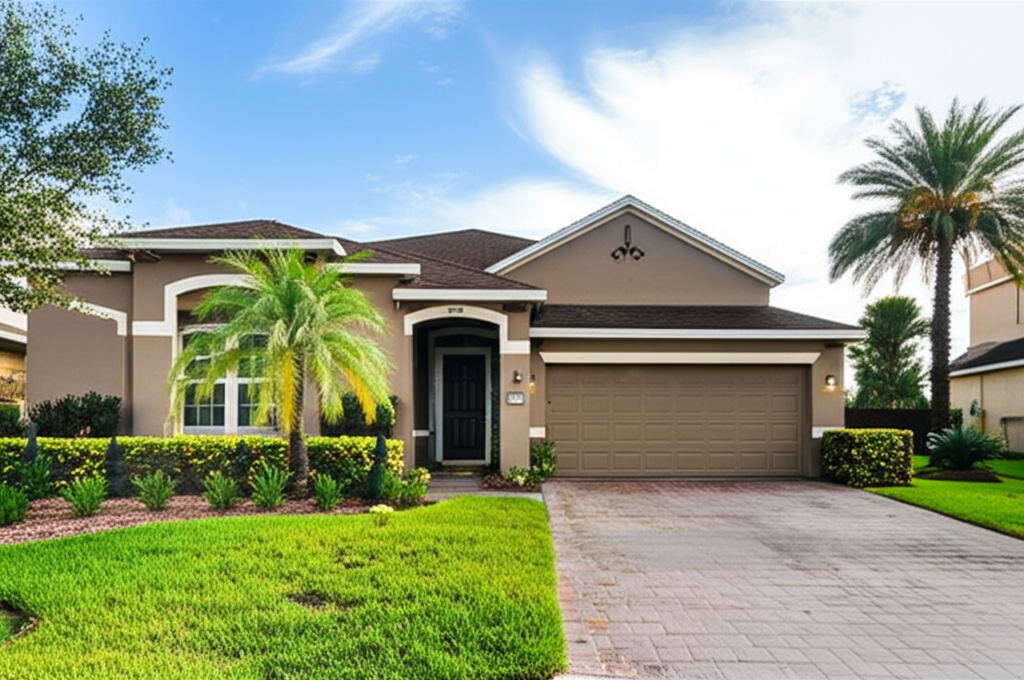New Home Loans: A Smart, Calm Guide for First-Time and Next-Time Buyers
Buying a home is exciting, but it can also feel like learning a new language. The heart of that language is your new home loan. Whether you’re purchasing your first place or moving up to your next, understanding how mortgages work—without the jargon and guesswork—gives you the confidence to make better decisions, negotiate effectively, and ultimately save money. This guide walks you through the process in plain English, from the moment you think about pre-approval to the day you get the keys.
What a “New Home Loan” Really Means
A new home loan is simply the mortgage you take out to buy a property you don’t already own. Unlike refinancing, which replaces an existing mortgage, a new home loan helps you acquire the home in the first place. The process involves a few key players: your loan officer, who helps you choose a loan and gathers your documents; the underwriter, who reviews your finances and the property to approve the loan; the appraiser, who estimates the home’s fair market value; and the title or closing company, which handles the money and paperwork at the finish line.
Early in the process you’ll hear about “pre-qualification” and “pre-approval.” Pre-qualification is a quick estimate based on basic information you provide. Pre-approval goes deeper—involves a credit check and income verification—and carries more weight with sellers. Think of pre-qualification as a casual conversation and pre-approval as a formal letter that says, “This buyer can fund the deal.”
How Lenders Decide What You Can Afford
Lenders look at three big buckets: income, credit, and cash.
Income matters because it determines your debt-to-income ratio, or DTI. This is the percentage of your gross monthly income that goes to debt payments, including the new mortgage. If you earn $8,000 per month and your debts (car, student loans, credit cards, and projected mortgage) total $3,200, your DTI is 40%. Different loan programs have different acceptable ranges, but staying in the low-to-mid 40% range often keeps approvals smoother and gives you more breathing room.
Credit scores matter because they signal how you’ve handled debt in the past. Higher scores often mean better interest rates and lower monthly payments. If your score is still a work in progress, don’t panic; it’s common to improve credit over a few months by paying down balances and avoiding new debts.
Cash includes your down payment, closing costs, and “reserves,” which are funds you’ll still have after closing—often measured in months of mortgage payments. You can use savings, proceeds from a sale, or even gift funds from family (documented with a gift letter). Lenders also like to see funds “seasoned,” meaning they’ve been in your account for a while, and they will ask about large recent deposits to make sure everything is legitimate.
Choosing the Right Loan Type
There isn’t a single “best” loan; there’s the best match for your situation and goals. Conventional loans are the most common and work well if you have solid credit and at least a small down payment. Fixed-rate mortgages keep your rate the same for the life of the loan, offering predictability. Adjustable-rate mortgages (ARMs) start with a lower fixed rate for a set period, then adjust periodically. ARMs can make sense if you expect to move or refinance before the rate starts changing, but they require a plan.
Government-backed loans make homeownership accessible with flexible requirements. FHA loans allow lower down payments and credit scores, with mortgage insurance that’s built into the payment. VA loans, for eligible service members and veterans, often require no down payment and have no monthly mortgage insurance. USDA loans target rural areas and also offer low or no down payment options, subject to location and income limits.
If you’re purchasing a higher-priced home, you may cross into “jumbo” loan territory, which can have stricter requirements but is still very doable with a strong financial profile. The key is to weigh initial costs, monthly payments, and how long you expect to keep the loan.
Rates, Points, and the Real Cost of Money
Your interest rate drives your monthly payment, but the APR—the annual percentage rate—reflects your rate plus certain fees, giving you a fuller picture of total cost. Some lenders offer the option to pay “points,” which are upfront fees to reduce your interest rate. One point usually equals 1% of the loan amount.
Here’s a simple example. Imagine a $400,000 purchase with 10% down, so a $360,000 loan. At 7.00%, your principal-and-interest payment is roughly $2,395 per month. If you pay one point ($3,600) to lower your rate to about 6.625%, your payment might drop to around $2,305, saving about $90 per month. Your break-even point—the time it takes for monthly savings to equal the upfront cost—would be $3,600 divided by $90, or about 40 months. If you plan to keep this loan longer than 3 to 4 years, paying the point could make sense. If you expect to move or refinance sooner, you might skip it and keep that cash for other costs.
You may also hear about a “2-1 buydown.” This is a temporary rate reduction often paid for by the seller or builder. Your rate is 2% lower in year one, 1% lower in year two, and then it returns to the original rate. This can ease you into the payment while you settle in or wait for a possible refinance opportunity. It’s not free money—the cost is set aside upfront—but it can be a win if the seller contributes and you want more breathing room early on.
Down Payment, Closing Costs, and “Cash to Close”
Your down payment is part of your equity from day one. You don’t have to put 20% down; plenty of buyers succeed with 3% to 10% down, depending on the loan type. If you put down less than 20% on a conventional loan, you’ll likely pay private mortgage insurance (PMI). Think of PMI as a fee that protects the lender when equity is thin; it typically falls off once you reach enough equity through payments and appreciation. FHA loans have their own mortgage insurance rules, which differ from PMI.
Closing costs are separate from the down payment and typically range from about 2% to 5% of the purchase price. They include lender fees, appraisal, title work, recording fees, and “prepaids,” which cover things like homeowners insurance and property taxes that are collected upfront. Many lenders set up an escrow account—a savings-like account built into your monthly payment—to save toward your annual tax and insurance bills so you don’t have to pay them in a big lump sum.
When you make an offer, you’ll likely include earnest money, a deposit that shows you’re serious. That money is held in escrow by a neutral third party (often the title company) and applied to your purchase at closing. If the deal falls through for a covered reason—like a financing or inspection contingency—you can usually get it back.
Shopping Lenders Like a Pro
Rates change daily, and even small differences add up. To compare fairly, request Loan Estimates from two or three lenders around the same time on the same day, using the same scenario (property type, down payment, credit score). Compare the rate, the projected monthly payment, and the total costs over the first five years and the life of the loan. Don’t be afraid to ask a lender to match a better offer; competition is healthy.
Many buyers worry that multiple credit inquiries will hurt their score. The credit bureaus allow a “shopping window” so that multiple mortgage pulls within a short time frame count as one inquiry for scoring purposes. It’s far better to shop smart than to accept the first quote without context.
Consider the rate lock too. Locking secures your rate for a set period while you find a home or complete closing. Standard locks are often 30 to 60 days. For new construction, longer locks or “lock-and-shop” programs can be valuable, but ask about costs and extension options if there are delays.
Making an Offer and Protecting Yourself with Contingencies
Once you find the right home, contingencies protect your earnest money. A financing contingency gives you time to finalize the loan; if the lender can’t approve you despite your best effort, you may be able to cancel. An inspection contingency lets you hire a professional to assess the home’s condition and negotiate repairs or credits—or cancel if major issues arise. An appraisal contingency ties the deal to the home appraising at or above the purchase price. If it comes in low, you can renegotiate or, in some markets, bridge the gap with added cash if you still want the home.
In a hot market, some buyers consider waiving contingencies to stand out. This is risky. A smarter approach is to shorten contingency timelines, get a robust pre-approval, and discuss appraisal strategies with your agent and lender before you write an offer. You can also ask for seller credits to cover closing costs, fund a 2-1 buydown, or offset needed repairs—especially helpful if you’d rather keep your cash for moving and furnishing.
From Contract to Keys: What Happens Behind the Scenes
After your offer is accepted, the lender orders an appraisal, the title company runs a title search to confirm ownership and check for liens, and underwriting reviews your file. You’ll be asked for updated pay stubs, bank statements, and explanations for any unusual items. It’s normal. The goal is a “clear to close,” which means you’re fully approved and just waiting to sign.
Before closing, you’ll receive a Closing Disclosure, a standardized document that shows your final numbers—rate, payment, closing costs, and cash to close. Review it carefully and ask questions about anything unclear. You’ll also set up homeowners insurance and confirm how funds will be wired. On closing day, you’ll sign the loan documents, the deed will be recorded, and you’ll get the keys. It’s a lot of paperwork, but it’s the last big step before you move in.
Special Considerations for New Construction
Buying from a builder can offer incentives, like credits toward closing costs or design upgrades, especially if you use the builder’s preferred lender. Compare those incentives against independent offers to ensure you’re not overpaying in rate or fees. New construction also introduces timing questions: will the home be ready before your rate lock expires? If not, what’s the cost to extend? Clarify the builder’s completion timeline, what happens if there are delays, and how your deposit is protected.
Another factor is the appraisal. In a developing community, comparable sales may be limited, which can affect appraisals. Work with your agent and lender to set realistic expectations and plan for how to handle an appraisal that comes in lower than expected.
What Not to Do During the Loan Process
The period between pre-approval and closing is not the time for big changes. Avoid switching jobs without talking to your lender, because employment verification is part of the approval. Hold off on major purchases—no financing a car, buying furniture on credit, or opening new credit cards—until after closing. Keep your bank activity clean and consistent, and be ready to explain large deposits. When in doubt, ask your lender before you move funds around. A quick conversation can prevent a last-minute hiccup.
A Quick Scenario: Choosing Between a Seller Credit and a Lower Price
Imagine you’re buying a $500,000 home and your lender estimates about $15,000 in closing costs and prepaids. The seller offers you a choice: take a $10,000 price reduction or a $10,000 credit toward closing costs. If you’re putting 10% down, the $10,000 price reduction lowers your loan amount by $9,000 and might save about $60 per month at current rates. The $10,000 credit could cover most of your closing costs, reducing your cash to close by that full amount. If you’re tight on cash, the credit may be more valuable. If you’re flush with cash and plan to keep the home for decades, the price reduction may win in the long run. The “better” choice depends on your cash needs and how long you’ll keep the loan.
Demystifying a Few Terms You’ll Hear
Escrow can mean two things. First, your earnest money is held in escrow by a neutral third party until closing. Second, your lender may collect a portion of your taxes and insurance each month into an escrow account, then pay those bills when due so you don’t have to.
Earnest money is your good-faith deposit to show the seller you’re serious. It’s applied to your purchase at closing, and returned to you if you cancel for a covered reason in your contract.
A contingency is a condition in your offer—like financing, inspection, or appraisal—that must be satisfied for the deal to proceed. If a contingency isn’t met, you may be able to cancel without losing your earnest money.
Putting It All Together
The path to the right new home loan is straightforward when you break it into steps. Get a strong pre-approval so you know your numbers. Choose the loan type that fits your timeline and comfort with risk. Compare lenders on the same day, using the same assumptions, and look beyond the headline rate to the total cost over time. Understand how down payment, closing costs, and monthly escrows work, and don’t be shy about asking the seller for credits if that helps you preserve cash. Protect yourself with thoughtful contingencies, and keep your finances steady through closing.
Above all, remember that you’re in control. The best loan isn’t just the one with the lowest rate; it’s the one that aligns with your life—your savings, your monthly budget, and how long you expect to stay in the home. With the right plan and a trusted team, your mortgage becomes a tool, not a hurdle, and the keys are closer than you think.




